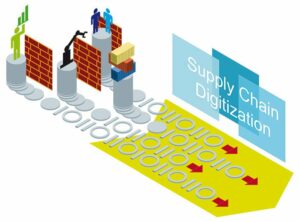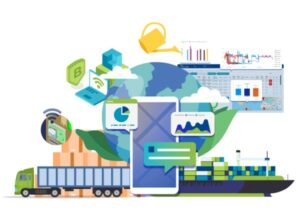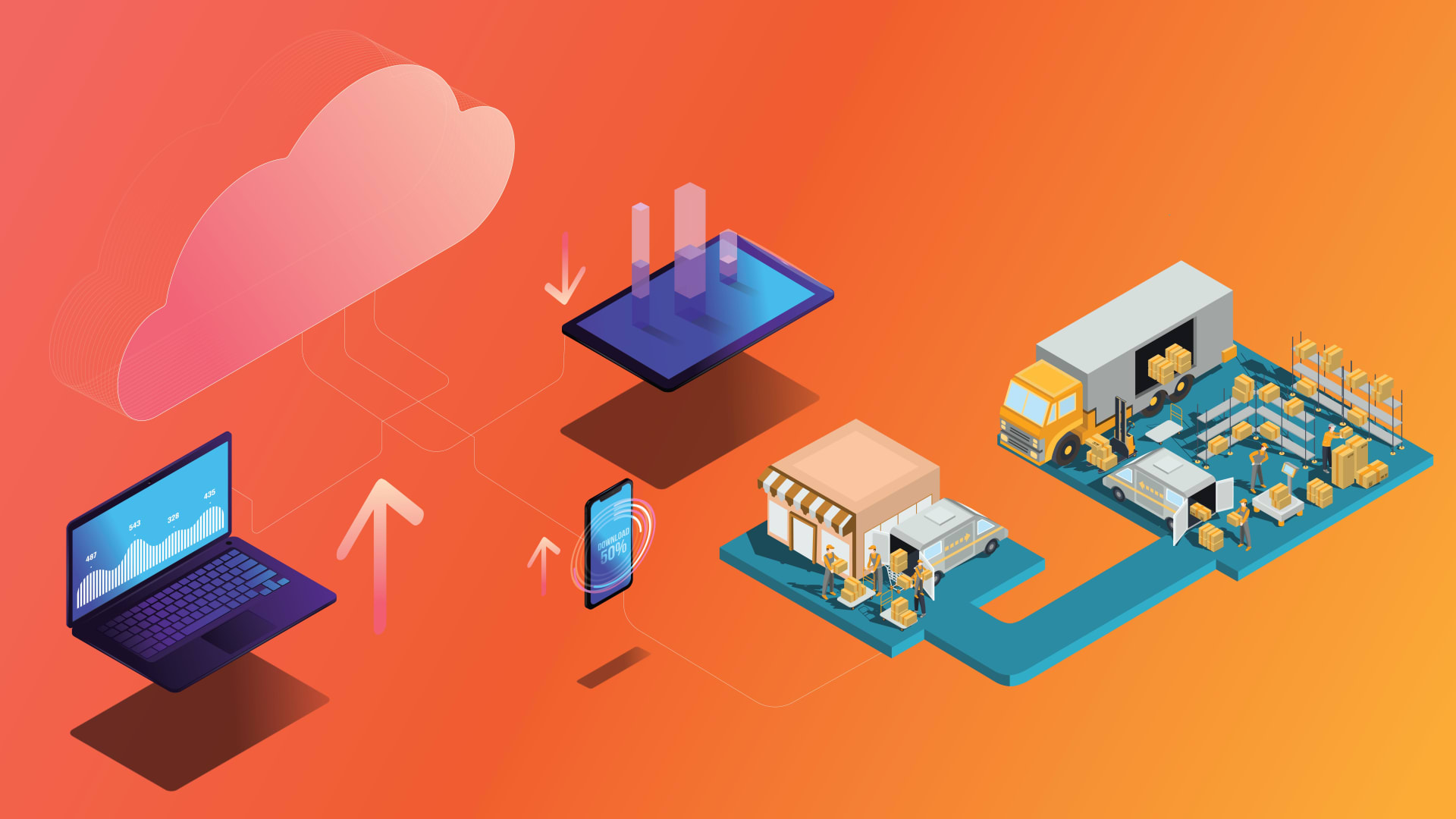The application of digital technology in the supply chain and logistics businesses is showing a massive growth recently. Businesses from every sector in this industry are now adopting digital technologies and changing their models to be able to fit in with new digital transformation trends. They come up with new processes or adjust the current ones, build new company cultures, and even introduce brand-new customer experiences to meet the changing needs of consumers and market demands. Digital transformation in supply chain and logistics helps companies to take advantage of new technologies and stay competitive in a market that is continuously changing and expanding.
In this article, Kyanon Digital will examine the digital transformation in supply chain and logistics businesses to see how it has been impacting and changing the industry as well as to know about the digital transformation priorities of businesses from some sectors.
Before diving into detail, let’s see how the COVID-19 has affected the supply chain and logistics industry
The COVID-19 crisis that globally spread out in January 2020 has had a strong impact on all aspects of the global economy, and especially has disrupted the global supply system including logistics which is a vital part in the supply chain network. This disruptive impact on global supply chains has reminded organizations about the importance of risk mitigation and increasing resiliency to focus on. Since then, some of the main customer segments of the logistics service industry such as production, circulation and import-export have significantly declined, leading logistics service providers to face many obstacles in their operations.
The COVID-19 pandemic has taught us a lesson that we should not be too dependent on some of the world’s leading economies in the supply chain network. Because once the network is hit heavily, logistics operations are affected, most importantly in the inventory activities. In addition, the pandemic also shows us that digital transformation is an objective and urgent requirement for the supply chain and logistics service industry.

Global supply chain effects of Covid-19 control measure
Reasons for a digital transformation in supply chain in general and specifically in logistics
What was wrong so far in the field of supply chain and logistics and why is a digital transformation necessary in logistics?
- Delivery times: It is important that any company (to stay competitive) is able to set delivery time with accuracy. This aspect has become a necessary factor in the purchasing decision-making process of consumers.
- Speed: That the parcels reach their receiving address in the shortest possible time and without any added costs. This can be achieved by analyzing all the information in real time to assess the most relevant decisions. Speed is another factor that consumers take into account when making a decision to order or buy a product.
- Hours of service: This is also another aspect in which logistics companies must improve. The collection has to remain flexible, but at the same time it is necessary for customers to be able to know that the shipment is at the destination and when it is delivered.
- Ease of return: Another problem for many companies is returns. In this aspect, companies must provide the maximum facilities to customers. On the other hand, these operations should not require an additional cost.

Digital transformation in supply chain and logistics
How Is Digitization Changing Logistics Industry
With automation services to handle those above problems, the supply chain and logistics industry is rapidly changing. With the ongoing digital transformation, logistics companies have been becoming leaner, faster, and more efficient. Additionally, they’ve found ways to serve the customers’ needs more effectively and efficiently than ever before by using a combination of sensors, robotics, IoT, and data analytics. And all these will completely revolutionize the company’s operations.

Supply chain digitization
Benefits Of Digital Transformation In Logistics
At the end of the day, logistics can be a complicated industry with many mitigating systems. For example, it usually relies heavily on truck drivers who might drive several hours each day. They sometimes have to push the rules in order to be able to meet their deadlines. The digital transformation in logistics will help reduce some of the pressure placed on the industry by the massive growth of e-commerce. For example, the industry is going to expect an influx of self-driving trucks, and truck drivers will be replaced by self-driving technologies. Thereby helping it be safer since humans are prone to errors.

Benefits of digital transformation in logistics for truck drivers
Digital Transformation Priorities for the Logistics Industry – by Sub-Sector
Each sub-sector in the supply chain and logistics industry has its own priorities to adapt to the change and to benefit from digital transformation. Let’s examine a few of them:
Consumer goods companies
The goal of consumer goods businesses is to meet customer expectation and satisfaction, and their priority is to deliver faster to any location.
B2B (Business to Business) companies utilize internet technologies to enhance operational relationships between organizations; B2C (Business to Consumer) companies also utilize technologies to enhance relationships with their end customers. Two main technologies used by goods companies are e-commerce platforms and web analytics. E-commerce solutions help manage functions like mobile commerce, marketing, inventory management, transaction processing, and so on. Web analytics tools are used to measure details such as the number of visitors to a website, how they interact with the site, the keywords on the search engine, and other metrics.

E-commerce solutions
Carriers and loaders
These businesses need real-time data regarding the delivery, and their priority is to use online tools to have information about current services in all types of shipping. Carriers focus on optimizing their delivery processes by gaining real-time data about incidents, and delays. This information helps them evaluate the current shipping method to make a decision on switching to an alternative or change the delivery route.

Online tools for carries and loaders
Fleet management companies
Fleet management companies prioritize to improve shipping management by using route-planning solutions which consider multiple factors like customer preferences, load placement, vehicle and storage capacity, distance between shipping locations, and so on. For this priority, companies aim to use IoT technology and tools placed in the vehicles that indicate maintenance requirements for specific parts. They also reduce incidents due to human error by utilizing onboard safety solutions.

Fleet management
Government-facing Companies
Government-facing companies aim to use technologies such as blockchain, IoT, AI, automation, big data, and analytics to be more efficient, productive, and profitable. The application of technology helps them overcome challenges like public accountability, tighter budgets, and antiquated infrastructure.

Application of technologies in government-facing companies
Warehouse management
Warehouse management companies aim to digitize their operations by using technologies like IoT to move them to the cloud. Doing this helps ensure the right item is in the right location at the right time. Warehouse management businesses also want to prevent congestion in specific areas at peak times, lower fuel consumption, and minimize unnecessary trips.

Using technologies to digitize the operations
Inventory Management
Inventory management companies prioritize digital transformation to achieve these goals below:
- Minimized mistakes: Systems provide an automated process to significantly mitigate the risks of human error in information analysis and input.
- Robotic integration: Integrating inventory planning solutions with robotics and ERP systems to make process improvements smoother, enhance productivity, and save costs.
- Improved logistics performance and enhanced fill rates: Software products using real-time data and inventory-planning software with machine learning algorithms can have fast demand-sensing features and allow asset tracking to boost on-time delivery as well as reduce holding and inventory costs.

Using automated process to improve logistics performance
Digital Transformation Challenges
Shifting from one process to a new one is challenging for everyone involved. As companies deal with the changes to keep up with modern society, the challenges become more apparent. However, digital transformation does not need to be challenging, it just needs to be implemented smoothly and efficiently. In order to do that, finding a great consultancy to partner with is the best solution during this tough time of COVID-19 crisis.
And Kyanon Digital believes that we are a great partner for your company. If you are finding a digital transformation consultancy, drop us a message!

